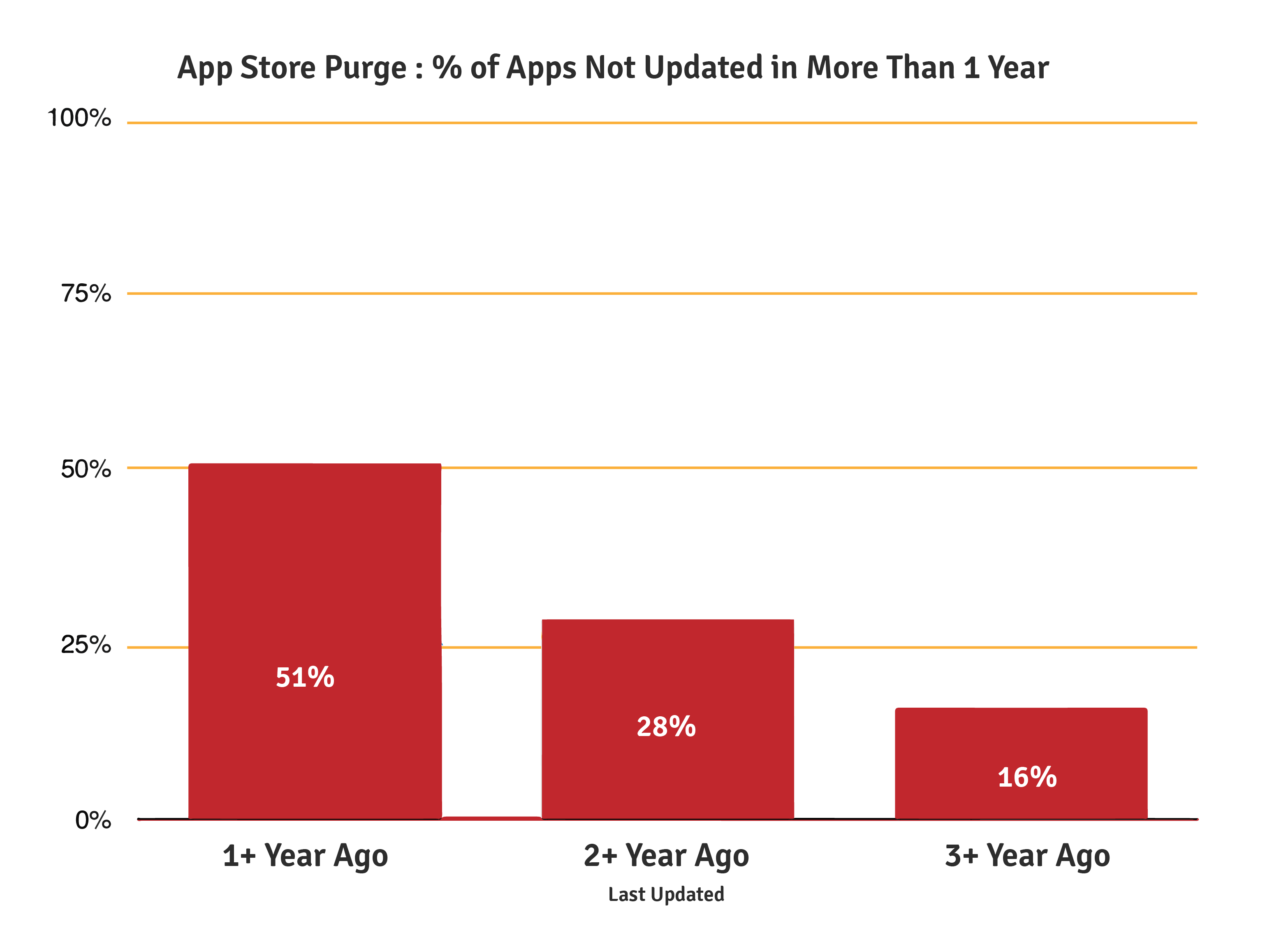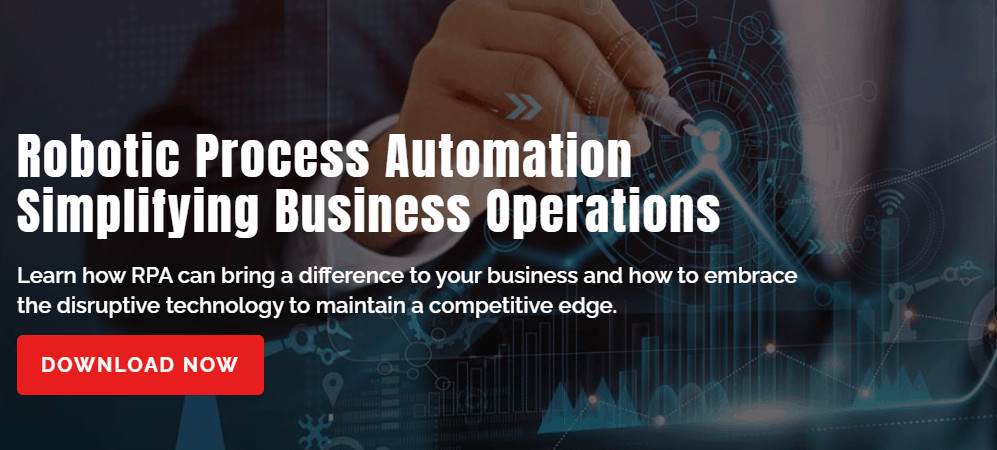Category: Digital Transformation
Facial Recognition Technology – What’s In Store For The Future
When Facebook started automatically tagging faces in uploaded images, nobody realized that this facial recognition technology would hike up to tracking people down while walking on the streets. In the past several years, this disruptive technology has gained immense popularity, that it is now used everywhere, from airports to shopping centers, to law enforcement. With its growing predominance in national safety and security, the face recognition market is estimated to reach USD 11.30 Billion by 2026.
“Facial recognition has been around for a long time—like the 1960s. Perhaps the father of facial recognition, Woodrow Wilson Bledsoe, an American mathematician and computer scientist who classified photos of faces all by hand, (RAND tablet), even he might have been alarmed at how facial recognition technology is supercharged today by advances in computing power, 5G speeds and AI paired with machine learning.”
– Tamara McCleary, CEO of Thulium, and a unique advisor to leading global technology companies such as SAP, Dell, Oracle, IBM.
Moreover, the advancements in artificial intelligence and machine learning are bringing about an active expansion to this technology. It won’t be long when the automation of facial recognition technology will fundamentally change the way we do many things. However, many minds still doubt on the path this revolution is leading to.
Let’s dig deeper into the advancements of the facial recognition technology, what it holds for the future and whether it’s completely safe to rely on such a disruptive technology that fiddles with personal identities.
Facial Recognition Technology In-Depth
So what is facial recognition technology and how exactly does it work?
Facial recognition is a biometric technology that utilizes unique facial features to recognize individuals. Today’s plethora of innumerable photos and videos make the dataset for this technology to work. Through artificial intelligence and machine learning capabilities, software mathematically maps distinguishable facial features, to compare patterns in newly available images with visual data stored in the database. Such a recognition process allows the simple unlocking of phones to security checks at airports.
In a way, artificial intelligence plays a vital role in the complete identity recognition process. A branch of artificial intelligence known as computer vision works through measuring nodal points on a face to make a face-print. This faceprint is a unique code that is applicable only to a particular person. This enables identification.
“I believe AI in Facial Recognition could add great value to society but we have to be careful to use clean data and we have to educate the public for the need for good, clean, accurate data to be sure we do not accidentally disenfranchise certain groups even more in the future. We must assure the data does not include unconscious bias or even deliberate bias programmed into the code. It is also important to note that we have a major lack of data for many disenfranchised groups including the community of persons with disabilities.”
– Debra Ruh, CEO, Ruh Global IMPACT, Global Disability, and Aging Inclusion Strategist.
Once this faceprint is made, the technology runs through an identity database to match this face with a name and other required details. Thus, the probability of error is near to rare; maybe an eight out of 1000 scans could mistakenly identify the person. This is what makes this technology an excellent prospect for performing crucial functions.
Read more: How Fingent helped develop a unique mixed reality application for a leading university to identify people using facial recognition
Innovative Uses Of Facial Recognition Technology
As facial recognition technology evolves with time, few industries and countries apply the technology in innovative ways.
China is rising to be the leader in facial recognition technology. Although part of the technology remains a perspective, its innovative use is what amazes the audience. A few other countries following the trend are Japan and the United Arab Emirates. The US doesn’t stand back either. Look at these impressive ways of face recognition technology implementation.
- Face recognition is on its go, replacing cash and credit cards. At fast-food units like KFC, customers can just smile into a self-serve screen to automate the identification and withdrawal of cash from banks. Some banks are also allowing customers to use face recognition instead of bank cards.
- The automobile brand Subaru has integrated facial recognition cameras to its Forester brand of SUVs. This is intended to detect when a driver is tired or about to sleep to take necessary actions to prevent accidents. This indeed is a tremendous innovation towards road safety.
- The 2020 Tokyo Olympics, is reported to make use of facial recognition to boost their security systems. Instead of relying on ID cards that have a high probability of being fake, the authorization is now implementing the FR technology to allow media, competitors or other such people to enter the premises.
- Dubai Airport also makes use of the FR technology to strengthen their security. A virtual aquarium fitted with 80 facial recognition cameras examines every passerby to easily recognize criminals or offenders. Also, police cars are on their go-to implement FR cameras to identify criminals and wanted vehicles quickly.
- Facial recognition technology is no doubt making a great impact on national security systems, promising a safe and crime-free future. The US government is also making use of biometric exits and AI cameras to track people crossing their international boundaries without proper documents.
The Growing Concern
Though face recognition technology offers innovative and impressive use cases in security and surveillance, there are numerous challenges that it faces. Privacy being a major concern, not everybody is happy with the storage of sensitive and personal data. A potential downside of this technology is the data and privacy breaches. The databases containing facial scans and identities are being used by multiple parties such as banks, police forces, and other defense firms and are hence prone to misuse.
Considering the face recognition tech as a threat to their citizens’ privacy, many cities including San Francisco, Massachusetts, Cambridge, and others are planning to put a complete ban on real-time face recognition surveillance.
“Concerns around AI’s practical applications like facial recognition have begun crystallizing over the last few years and will continue unabated. Current AI-based face recognition systems possess a grave threat to individual privacy, which if unregulated may end up jeopardizing sensitive user data to the wrong hands in times to come.”
– Varghese Samuel, CEO & MD Fingent.
Moreover, how much can this technology eliminate crime is still being discussed. The accuracy of the system in detecting people who cover their faces from cameras or disguise themselves is yet a topic of dispute. However, to everyone’s relief, the technology is showing constant improvement in this matter. According to the U.S. National Institute of Standards and Technology (NIST), facial recognition systems got 20 times better at finding a match in a database over a period that covered 2014 to 2018.
“Artificial intelligence has made great strides, but still has a long way to go. It is powerful to use on a daily basis, when the stakes are low (for example, in tagging photos or recommending advertisements), but not yet trustworthy enough to stand fully on its own in high-stakes applications, such as driverless cars, medical diagnosis, and face recognition, where errors can deeply affect people’s lives.
– Gary Marcus, Founder and CEO, Robust.AI Professor Emeritus, New York University, Author of book: REBOOTING AI
The Untold Future
It is pretty much tough to predict where the facial recognition technology would be in the coming years, but the increase in AI advancements is sure to widespread this technology around the globe. Major industries have already capacitated the FR capabilities to replace the traditional process of paying bills, opening bank accounts, checking controls at airports, and such. A few of these industries include healthcare, retail, marketing, and social media platforms.
In a nutshell, face recognition technology is expected to predominate the globe in the near future. The increasing usage of mobile devices and demand for robust fraud detection and prevention is predicted to majorly drive the implementation of this technology. As per the predictions made by Markets and Markets, a prominent research firm, the global facial recognition market size is expected to grow from USD 3.2 billion in 2019 to USD 7.0 billion by 2024, at a Compound Annual Growth Rate (CAGR) of 16.6% during 2019–2024.
“The more people grow accustomed to using facial recognition products and services that enhance efficiency and that can, at the moment, seem altogether too fun or mundane to be harmful — whether it’s tagging photos, unlocking a phone, or projecting how your face might look in the future — the more facial recognition technology becomes normalized.”
– Jarno M. Koponen, Head of AI & Personalization at Yle News Lab. His work has been covered by The New York Times, New Scientist, Oxford Reuters Institute, Mashable, TechCrunch.
Face recognition technology is revolutionizing the world more than you think. It’s time to figure out how this technology could bring added value to your firm. Contact our experts today!
Stay up to date on what's new

Featured Blogs
Stay up to date on
what's new



Talk To Our Experts
How Your Business Can Reap Profits Through AI Integration
“Is it the right time for companies to capitalize on AI?” – This question is lingering around the tech air for almost a decade now.
Fear of losing jobs to automation, soaring IT budgets, lack of adequate skills and infrastructure, inability to perch on the ideal technology partner, and many other reasons are refraining businesses from venturing boldly into artificial intelligence initiatives.
Engaging with clients across the globe, Fingent has realized that many of them believe AI to be the next thing in their business. Research suggests that next-generation enterprise IT systems that include AI components — called “future systems” — will grow revenues among leading companies by as much as 33% over the next five years. Many have adopted machine learning and other forms of AI into their core business processes.
Moving from data-driven to AI-driven digital environments is the next evolutionary phase in business. By embracing AI into their workflows in strategic ways, business leaders will transform how data adds value to the business. This will introduce new ways for humans to contribute as well.
As business leaders consider AI for their organizations, the top question is no longer “What is AI?” or “How does it work?” but “What can AI do for us?” In our effort to help our customers take advantage of AI, we have curated the pain points faced by businesses and how they can identify business capabilities and opportunities with AI in our latest white paper.
The insights you will gain by downloading our white paper:
- Understand more about AI and its broad categories
- Identify business capabilities and opportunities with AI
- Key business areas where AI brings the most value
- Steps to build a successful AI strategy for your business
- The simplest way to integrate AI into your business
- How to involve all in the AI wave to gain positive outcomes
Link to Download: How Can Your Business Use AI to Achieve Higher Profits Now?
Fingent’s technology solutions ensure that technical implementation and strategic adoption of AI into your business happen in accordance with your long-term goals. Connect with our AI experts today to start a conversation about your first AI initiative.
Stay up to date on what's new

Featured Blogs
Stay up to date on
what's new



Talk To Our Experts
Fingent Emerges as a Leader in Node.js Development
Fingent is proud to announce that we have been featured in a recent press release recognizing the top Node.js development companies by TopDevelopers.co, a renowned review and research platform of IT service providers.
The importance of Node.js
Node.js is a versatile server-side environment that lets the developer create powerful server-side applications with JavaScript. The availability of a large repository of codes, speed and the efficiency of Node.js are the factors that have contributed to the rising popularity of the platform.
About Fingent
Fingent was established in 2003 with an aim to provide custom software services to our clients. With determination, hard work and a constant focus on the requirements of our customers, we have expanded and today we are serving clients across more than 20 industrial sectors and have an active client base in more than 14 countries covering 4 continents.
With a curious mind and a constant zeal towards customer satisfaction, we have been able to achieve this milestone of entering the coveted list of top Node.js developers.
Why do clients consider Fingent as an efficient service provider?
We have been able to achieve a satisfactory rating of 4.9 out of 5 on the 650+ projects that we have completed. In all these years, we have never lost our focus on understanding the problems of the clients and offering innovative solutions to them. We have established a dedicated research and development center in India to focus on delivering innovative solutions to our customers.
More than 30 companies including brands such as Sony, NEC, PWC, and Johnson & Johnson have named us as their Global IT partners.
We provide a plethora of exclusive and efficient IT services to our clients which includes services like enterprise software development, hybrid app development, Internet of Things, IT consulting, product development services, mobile application development services, Artificial Intelligence, custom software development, cloud computing, iOS app development, and SAP.
We have happily worked with clients from a diverse set of industries like retail, logistics, real estate, oil and gas, healthcare, fitness, legal consultants, chemicals, to name a few, but we have never let them go without a smile of satisfaction after project delivery. Working with diverse industries and varied client requirements has helped us in learning the nuances of each industry, which has ultimately helped us in serving our clients in a better manner.
We helped a client in designing a solution that uses the data of NHS (National Health Service) in the United Kingdom as input and gives interactive visually rich graphs as output. The aim was to analyze the data and provide the users with a list of the best hospitals in the U.K. The solution we developed provides the users with every detail about the hospitals listed. Our portfolio has more details about NHS and a deep insight into our projects, work proficiency, technical product development skills, and professionalism.
“We take a holistic view, considering for instance – the role of the app in the larger ecosystem that may include AI, Big Data and IoT, whether it connects to 3rd party systems, and most importantly the desired Customer Experience across the entire customer journey.” is what our Senior Vice President – Process and Technology, Mr. Deepu Prakash, expressed in an interview with TopDevelopers.co.
The profile of Fingent on TopDevelopers.co has all the interesting details on how Fingent has successfully been maintaining a remarkable balance between the clients we cater to, the various industrial sectors we serve, and the wide range of services that we provide.

Who is TopDevelopers.co?
TopDevelopers.co is a directory and review platform for B2B IT Firms. They offer unbiased service to service seekers, by providing them a listing of genuine and highly professional IT firms, that can help the service seekers in achieving their goals by providing high-quality technical services. The research team of TopDevelopers.co chooses the best firms by filtering a vast list of companies and introduces only the competitive names to the businesses, enterprises, and entrepreneurs to partner with. The company has a friendly team of researchers and a hassle-free communication system. They provide the listing service for various technologies and services, which makes it a one-stop destination to find your perfect technology partner. To give its clients a broad range, TopDevelopers.co reviews companies from all across the globe and you can filter the companies according to the country of origin, size, cost and other parameters.
To know more about why Fingent is rated as the top Node.js development company by TopDevelopers.co and how our skills and expertise can bring your business the competitive advantage to excel, contact us!
Stay up to date on what's new

Featured Blogs
Stay up to date on
what's new



Talk To Our Experts
Smoothening RPA Adoption For Your Business
Robotic Process Automation (RPA), is the new superhero in town!!!
With bots that can replicate exact human tasks, Robotic Process Automation is promising an increasingly effective, organized and productive workflow for businesses. How exactly RPA is providing businesses with these incredible benefits and how companies can avail them, are some points highlighted in this post.
What is Robotic Process Automation?
According to Wikipedia, Robotic Process Automation (RPA) is an emerging form of business process automation technology based on the notion of metaphorical software robots (bots) or artificial intelligence (AI) workers.
In other words, RPA is a generic tool that uses specialized computer programs or software bots, to automate high volume clerical tasks that otherwise require excessive inputs.
RPA is currently the most popular AI application or otherwise speaking, the new superhero in town, as it is easily enabling businesses to shift from legacy systems to complete automation.
How is RPA Promising A Better Business Future?
Industries like Banking, Insurance, Telecommunication, and Utilities are turning to be the biggest adopters of RPA. Such industries with high volume tasks and complex workflows often encounter innumerable human errors that cause lower production, depreciated revenue, and even risk to life.
Automating such recurring, time-consuming, and complex tasks, RPA is leading companies to a streamlined, time-effective, and efficient business eco-system.
Tackling The Barriers To RPA Adoption
Although RPA promises a brighter future for businesses, yet many companies are reluctant to adopt the technology. Considering RPA as a sophisticated, costly, and complex digital transformation, many companies are hesitant and mostly ignorant of this technology.
To enable easy understanding and adoption of RPA, we have briefed everything you need to know about RPA, in our latest whitepaper.
- Learn the growing opportunities of RPA
- Easily implement RPA to existing business workflow
- Transform your workspace with RPA
Read through our whitepaper to know more about how Robotic Process Automation can simplify your business operations!
To avail the right guidance on RPA adoption and learn how RPA can fit into your unique business processes, get in touch with our technology experts today!
Stay up to date on what's new

Featured Blogs
Stay up to date on
what's new



Talk To Our Experts
Swift 5.1: What’s Special with the New Features of Apple’s Xcode 11?
Swift 5.1 is Apple’s latest major release of its general-purpose, compiled programming language Swift. The new version offers greater stability along with several other improvements. If you have missed out on the new release features ever since Apple had announced the news on Swift.org, here is your best chance to take a look at the features that differentiate Swift 5.1 from its predecessors.
What’s New In Swift 5.1?
While Swift 5.0 was introduced with ABI stability that resolved Swift differences during runtime, Swift 5.1 comes with Module stability that reduces the differences during compile time. This means that future Swift releases can create and share binary frameworks. Additionally, critical language and standard library improvements along with Swift UI features are major changes.
Let us take a look into the details:
Module Format Stability
Swift 5.1 has attained Module Format Stability, that is, it can enable library compatibility at compile time. With this feature, third-party libraries can be used without worrying about the version of the Swift compiler with which it was built. To be more specific, if ABI stability ensures application compatibility during runtime, Module stability ensures library compatibility during compile time.
Module Format Stability can stabilize the module file to produce .swiftinterface, which is the compiler’s representation of the public interfaces in a framework. In a nutshell, with module format stability, a new text-based module interface file is defined and it describes the API of a binary framework.
New Language And Compiler Updates
1. Property Wrappers – Property Wrappers is the generalization of a user-accessible functionality utilized for defining custom-access patterns for atomic operations, property values, and so on.
The @propertyWrapper attribute has 4 major use cases such as constraining values, auditing property access, changing comparison semantics, and transforming values on property assignment.
2. Opaque Return Types – This type returns a value for a method, without essentially revealing the underlying type of value to the client that calls the API. This feature provides better encapsulation.
3. The return keyword is no more necessarily used for single expression functions as well as for getter functions.
4. Static subscripts and class subscripts are powerful features that can take arguments to change generic parameters to support many properties.
5. Synthesized memberwise initializers for structs – Unlike the earlier Swift versions where a memberwise initializer automatically gets created to accept parameters that matched the properties of a struct, here in Swift 5.1, the memberwise initializer now uses parameter values that are the default ones for any properties that use them.
6. Self is made universal to be able to refer to containing type while being used inside classes, enums, and structs.
7. The Optionals of Swift are implemented as enums of 2 different cases – some and none.
8. Optional enums can now be matched against non-optionals – While Swift already had ways to handle switch-case pattern matching between the optionals and non-optionals in case of integers and strings, Swift 5.1 has extended the feature to enums as well.
Standard Library Updates
- SIMD additions – Several API improvements such as a static scalarCount, .one, min, max, clamp, extending vectors, swizzling, etc. are a few major additions to Swift 5.1
- Array Initializer With Unlimited Access To Storage – Introducing a new initializer for arrays that need not pre-fill default values in the array. That is, with Swift 5.1, it is now possible to create an array of a particular size, without having to initialize every element.
- Ordered Collection Diffing – This new type represents the difference between collections, by which a line-by-line 3-way merge can be performed while coding.
- String Gaps and Missing APIs – Additional APIs for working with Strings such as creating and handling contiguous strings as well as missing functionality for users of String.
- Identifiable Protocol – For identifying distinct values that belong to a single logical entity.
Language Server Protocol (LSP)
The Language Server Protocol provides the reusability of language services. This feature is made possible across LSP-compliant editors and significantly reduces the effort that is required by the language team to make the language fully supported by various editors. This feature improves Swift’s usability which in turn improves the language adoption of the Apple ecosystem.
SwiftSynatx Updates
The SwiftSyntax update, for the libSyntax library, allows Swift tools to parse, generate, as well as transform the Swift source code. For instance, adding the SwiftPM dependency with a release tag does not require the Swift Compiler source and can be used in various scenarios. These scenarios include the following:
- Swift Pack – Used as a tool for the automatic embedding of Swift library source.
- Swift Rewriter – Used as a Swift code formatter.
- Periphery – Used to detect unused code.
- Muter – Used for mutation testing.
- Swift Stress Tester – Used as a test driver for sourcekitd-test.
Migration To Swift 5.1
Being source compatible with Swift 5.0, Swift 5.1 also supports compatibility modes for Swift 4.2 as well as for Swift 4/4.1. Xcode 11 of Apple consists of a code migrator that can take care of the source changes. A migration guide is also available that can help you through the various changes.
Platforms
- Linux – Ubuntu 18.04, Ubuntu 16.04, and Ubuntu 14.04 have their official libraries available for download.
- Apple (Xcode) – Swift 5.1 ships as part of Xcode 11 to enable development on Apple’s platforms. A toolchain is also provided for download in Swift.org.
Documentation
The Swift Programming Language has an updated version of Swift 5.1 on Swift.org as well as available for download on the Apple Books Store.
Swift 5.1: More On The Way!
Swift 5.1 is still under development and offers scope for more updates and changes in the coming days. Keeping in mind that the biggest feature was Module Stability, a beta of WWDC19 is still expected to come, the date of which cannot be decided at a fast pace.
To learn more about the recent advancements of Swift 5.1 and how the Swift team contributed to its massive development, stay tuned to our latest articles or drop us a call to get detailed guidance on the same.
Stay up to date on what's new

Featured Blogs
Stay up to date on
what's new



Talk To Our Experts
How to Attain More Business Value with AI Implementation
The potential of Artificial Intelligence (AI) is being harnessed by businesses to implement automation across several industries and to augment their efforts to provide stellar customer experiences. The incomparable precision, speed, and accuracy of AI-enabled solutions are driving an AI revolution and this blog will discuss five specific ways you can attain business value with AI adoption.
AI: A new approach to customer experience
IBM, one of the leading universal AI champions reveals that 74% of customer experience executives feel that AI will change how customers view their brand. AI provides customers with an experience that appears very similar to human-like interaction. AI-powered apps are highly efficient in enhancing customer interactions.
Automation of “the customer experience journey” through AI enables your business to personalize your marketing campaigns, which will boost the email opening rate. Among other things, AI provides improved customer insights and better customer satisfaction which results in increased conversion and strengthens brand loyalty.
Related Reading: How AI is Redefining the Future of Customer Service
Steps to Gain Business Value with AI Adoption
A study from Market Research Engine estimates that the Artificial Intelligence Market is expected to exceed more than US$ 191 Billion by 2024. The vast growth of information in huge quantities, growth in the adoption of cloud-based applications and services, and an increase in the demand for intelligent virtual/ personal assistants are the major driving factors behind the booming AI market.
Unfortunately, many are still unsure of how to adopt AI, and how it can be used to yield maximum results. We present you these 5 steps to adopt AI which will help you gain the maximum business advantage.
1. Map out a clear customer-centric strategy
The best way to do this is to analyze recent customer journeys with your brands such as discovery, presales, sales, and customer service. Such analysis will help you understand the experience your customers are having with your brand. Research director at Gartner, Olive Huang said, “Your business results depend on your brand’s ability to retain and add customers.” Hence it’s important to deliver a highly personalized experience to every one of your customers. Once that strategy is crafted, it can be delivered through AI.
Related Reading: 6 Ways Artificial Intelligence Is Driving Decision Making
2. Diagnose the problem
Just as the prudent diagnosis of a disease is crucial to helping a patient improve their health, finding out your specific business problems will help you use AI to improve business value. Organizations need to be clear about what AI can help them accomplish. Once the problem is identified, aligning AI to business priorities becomes easier. The beauty of AI algorithms is that once algorithms are enabled to solve one aspect of the business successfully, it can easily be adapted for use in other aspects of the business too.
3. Establish a governance program for customer experience
Before you begin your journey with customer experience, make sure to establish a governance program. The benefit of having a central team working on the AI project is that you can integrate program oversight with a complete comprehension of AI-related initiatives. This is true even when your customer experience teams are just in the learning process. Build a program to supervise development activities and business implications and set brand guidelines for AI technologies such as NLP. Also, establish standards to gauge the impact of customer experience initiatives and its correlation with ROI.
4. Bring the best onboard
Creating a custom AI solution is recommended over buying it readymade. It is important however that you bring in the best talent. Bringing in a team of dynamic people who can create exciting ways to engage with the customers sends a powerful message to your competitors. It will also put your organization on the radar as a tech-savvy innovator.
Read our latest white paper: How Could Your Business Use AI to Achieve Higher Profits & Growth
5. Prepare to store
A business that fails to look into the future fails to grow. Gathering relevant data allows organizations to derive greater benefits far into the future. Meaningful data help AI systems in achieving your organization’s objectives. Insufficient data could compromise the accuracy of AI applications, so get your team to build relevant data including cases and codes.
Drive Business Value With AI
Organizations are adopting AI faster than anticipated. To gain long-term and sustainable business value from Artificial Intelligence, you need to develop a robust implementation approach that takes into its fold, even the minute aspects of your enterprise. Contact us to adopt the power of AI into your business.
Stay up to date on what's new

Featured Blogs
Stay up to date on
what's new



Talk To Our Experts
How to Determine If Your Business Process Qualifies for Automation
A large number of businesses are adopting Robotic Process Automation (RPA) today to drive their critical enterprise operations quickly and affordably. While RPA offers a wide array of automation capabilities, you need to first identify which of your business processes are ideal to be automated so that your business enhances operational efficiencies to deliver positive outcomes. For instance, some companies achieve better outcomes when implementing rule-based automation when compared to non-standardized, variable types. Forrester recently reported that RPA Market will reach USD 2.9 billion by 2021, which makes it one of the most sought-after enterprise technologies. The picture is clear: it is crucial for companies to know the different ways to determine which of their business processes need automation.
This post attempts to walk you through the major questions and answers which can help you decide the candidature of a process for Robotic Process Automation:
Criteria to determine if a process is fit for RPA automation
Deciding whether a business process requires RPA implementation or not depends on two criteria:
- Process Fitness
- Automation Complexity
Process Fitness
To determine if a process is reasonable enough to offer tangible results by implementing RPA, it is first critical to understand the process type being considered. RPA can automate only clear and well-defined processes. For this, it is first required to know which category the workforce’s tasks belong to:
Repetitive/ Automatable processes
Automatable processes relieve the human workforce from performing repetitive tasks such as clerical and data entry works or data manipulation tasks. Automating such redundant tasks allows human workers to focus on core, value-adding functions.
We can differentiate four types of processes:
- Manual and Non-Repetitive Processes: The steps are performed by humans and are performed every time the process is executed.
- Manual and Repetitive Processes: The steps are performed by the user. A few of these steps are the same every time they are executed.
- Semi-Automated and Repetitive Processes: A few of the steps in these processes are already automated, using Macros, Outlook rules, and so on.
- Automated Processes: These processes are those that have already been automated by technologies other than Robotic Process Automation.
While the above four are somewhat repetitive/ automatable, there is another category: Manual Or Non-Repetitive processes that are not great candidates for RPA. This is because these processes need to stay manual or are non-repetitive due to the high exception rate or factors that cannot be integrated into business logic.
Rule-Based Processes
For a process to be automated, it should be rules-based. Human-made rules are applied based on which the system executes the process. Rules can be related to storing, sorting, and manipulating data. The rules-based system is a logical program that uses a predefined logic to interpret data or make decisions. These processes are always easy to use and understand. The rules-based processes have an exception rate which is either low or can be included in the business logic as well.
Standard Input Processes
Standard input processes are those that need to be either electronic/ easily readable or are readable using a particular technology that can be associated with RPA. An example of a standard input process is the OCR. The Optical Character Recognition or OCR algorithms have processes whereby printed or handwritten documents are scanned and analyzed automatically and the text data is converted into editable formats for efficient processing. Using OCR is a much more reliable way to automate tasks such as invoice processing.
Stable Processes
Stable processes are processes that have remained the same over some time and no changes are expected in the coming months. These processes are good candidates for automation, provided they meet with other critical criteria as well. The output of these processes is fairly predictable.
Related Reading: Robotic Process Automation: Choosing The Right Solution For Your Business
Automation Complexity
It’s also crucial to analyze the complexity of a process to see if it’s fit for automation. The complexity of deciding to automate a process depends on several factors such as the number of applications or systems, the number of times human intervention is required, or even the number of steps required to execute the given task.
Following are some of the factors you need to look at:
- Number Of Screens: RPA in this scenario works by programming the robot to perform functions at the screen level. That is, when the screen changes, the logic is taught. The number of screens is directly proportional to the elements to be captured and configured. For instance, the higher the number of screens, the larger is the number of elements to be captured and configured before process automation.
- Types Of Applications: There are different types of applications. Some can be easily automated such as the Microsoft Office Suite or Java. Some other processes require complex automation effort, such as Mainframe applications.
- Business Logic Scenarios: The complexity in automating a process increases with the increase in the number of decision points within the business logic.
- Types And Number Of Inputs: Standard Inputs are desirable. For instance, an invoice that is a standard input and needs to be configured for each supplier will be impacted by automation. On the other hand, non-standard inputs will have varying complexity grades. Among these, free text is the most complex one.
Using the above-mentioned four factors, the processes can be split into four major categories:
-
No RPA Processes
These are processes in which change happens frequently. The system environment is volatile and multiple non-digital or manual actions are needed.
-
Semi-Automation Processes
Semi-automated processes are fragmented down into multiple steps that are automated. These steps include the ones that need to be manual such as the validations of physical security tokens.
-
High-Cost RPA Processes
These processes are digital and can be automated. High-cost RPA processes either make use of some complex technologies such as Optical Character Recognition or OCR or require advanced skills in programming.
-
Zero-Touch Automation Processes
These processes are digital and involve a highly static system and process environment. This makes it easy to be broken into instructions and define simple triggers.
The Stages In RPA Implementation
RPA offers a multitude of ways in which the degree of automation can be increased. There are commonly 6 stages involved in RPA implementation:
- RPA Preparation: Here, the processes are defined, assessed, prioritized, and then the plan is implemented.
- Designing The Solution: Here, each process to be automated is documented ( as “as is” and ”to be”). The architecture is now created and reviewed. This is followed by the preparation of test scenarios and environments. With this, the solution design is now created and documented for each process.
- Building the RPA: In RPA building, the processes are automated, the workflows are tested, and validated. This is followed by the preparation of the UAT.
- Testing the RPA: The UAT is now performed, followed by the debugging of the workflows. The process is now ready to be signed off.
- Stabilizing the RPA: In this phase, initially, the Go-Live is prepared. The process is then moved to production, monitored, and measured. The lessons learned are now documented.
- Constant Improvement Phase: This phase involves the assessment of process automation performance. This is followed by tracking the benefits and managing the changes.
Download our latest white paper: How RPA Simplifies Business Operations
Utilizing RPA Effectively
Every company planning to use/ already using RPA applies automation to fulfill different operational goals. While businesses at the beginning of their RPA journey want to uncomplicate and rapidly execute their workflows, the veterans in RPA might wish to expand the scope of their existing automation solution and improve their regulatory compliance. Each one wants to leverage technology differently.
Whatever your goal is, Fingent helps businesses in leveraging RPA to deliver high business value, drive significant cost benefits, and enable technology to have a positive impact on your operational activities. Get in touch with us to know how we can realize your automation goals.
Stay up to date on what's new

Featured Blogs
Stay up to date on
what's new



Talk To Our Experts
5 Tips To Select The Ideal Chatbot For Your Business
Chatbots have opened up a whole new realm of communication between humans and machines. They enhance a company’s customer service and improve operational efficiency, driving better engagement, reduced churn rates, and overall sales growth. They have become immensely popular and their popularity only continues to increase. It is clear that the use of chatbots is imperative for your business success.
In this blog, we will take a look at the types of chatbots available and how to wisely select the chatbot that suits your business.
The Wide Array of Bots
Studies predict that by 2021, more than half of the enterprises will increase their investments in chatbots, creation than traditional mobile app development. Customers would prefer to get real-time answers from bots on a company website.
Chatbots can do just about anything. They can help you deliver a surprise gift to someone you love. They can also help you break up with your lover and much more!
Broadly, chatbots can be classified as follows:
- Action Chatbot: In order to follow through with a specific action, this type of chatbot requests relevant data from the customer.
- Social Messaging Chatbot: It utilizes social messaging platforms and allows customers to interact with the chatbot directly on social media.
- Scripted Chatbots: It uses a predefined questionnaire to interact with the customer.
- Natural Language Processing (NLP) Chatbots: Being an application of AI, NLP enables chatbots to understand the written or spoken language and come up with the best response.
- Contextual Chatbots: It is the most brilliant of all chatbot types. Since it is based on artificial intelligence and machine learning, it can self-improve over time.
Tips To Choose A Perfect Chatbot For Your Business
As a communication agent, chatbots play a vital role in automating mundane tasks in an “always-on” work environment. Chatbots can handle day to day queries until an emotive or complex issue arises, which might require the intervention of a trained human agent to address it.
Related Reading: Capitalizing on AI Chatbots Will Redefine Your Business: Here’s How
Here are a few pointers to select the perfect chatbot for your business needs:
1. Think about your target audience
Like every business that has a target customer, the chatbot too must have a target audience. It is important to remember that the chatbot should serve as the bridge between you and your customers. The bot should be able to understand the preferences of your customers and cater to their convenience.
2. Define objectives
Identifying and narrowing the specific tasks or areas you want to automate would yield maximum benefits. There are a few points that could help your business define those objectives. Carefully consider factors such as the platform where the chatbot would be used, the queries it would answer, the queries it would direct to a human customer care executive, and how it would manage the hand-over process smoothly.
3. Define your value proposition
The value proposition involves ensuring that the most vital factor of your business, is given prime consideration. It determines whether your customers will come to you or go to your competitors. A higher value proposition might require AI or ML capabilities; so gauge and determine your value proposition to select the right chatbot that fits your budget and your business needs.
4. What is your response speed?
According to the 2018 State of Chatbots Report, customers want quick and easy answers. Customers might get frustrated if the answers are delayed. The appropriate selection of chatbots can help you avoid such kind of delays effectively. When dealing with a complex issue, ensure that your chatbot is capable of collating information quickly without delay. If there is a need to hand over the query to a human customer care agent, it should be done seamlessly and fast.
5. Evaluate features and functionalities
Evaluation aids your business in identifying the essential features and functionalities required from a chatbot to run your business successfully. To begin with, you could create a set of standards that would analyze all solutions. Decide on which features are required, such as NLP, integrations, contextual awareness, analytics, and so on. Proper documentation is required while evaluating the features. Such a candid evaluation helps a business choose the right chatbot that could be fine-tuned later or could self-learn.
Download our case study: Using chatbots to create an enhanced and engaging learning experience
Make Your Business Chatbot Ready
In the 24/7 era where customers want instant services, chatbots help businesses to keep pace with such expectations. By evaluating your own objectives and keeping in mind your customers’ expectations, your business can maximize the benefits of chatbot technology. However, choosing the right chatbot that fits your organizational needs and implementing it without any flaws require a good deal of expertise.
Our team at Fingent has been doing amazing things with Chatbots for our clients. Recently, we provided a matured chatbot assistant technology to a client, which provides comprehensive user intent identification and processing as well as satisfactory response according to the user query. Chat with us to identify the best chatbot solution for your business, and learn how we can implement it for you quickly.
Stay up to date on what's new

Featured Blogs
Stay up to date on
what's new



Talk To Our Experts
Overcoming Data Challenges in Insurance: How Blockchain Helps
We live at a time when the global data regulators are increasing their data security requirements across businesses and industry verticals. Data being the most powerful asset of insurance providers, insurance companies worldwide have started implementing steps to secure confidential and sensitive information with the help of advanced technologies like blockchain. The vast growing data holds an immense potential to transform insurance companies, but managing the data coming from multiple sources throws up a lot of challenges. Here’s how blockchain helps in overcoming the data challenges in the insurance industry.
Data Challenges in Insurance Vertical
As you know, insurance is a data-centric service. Let it be life and annuity, property and casualty, risk, loss, or claims, insurers are dependent on large volumes of data for various workflows and operations. With increased data flow comes high risks associated with data storage. A wide range of mobile-friendly options is now made available for consumers by the insurance providers to share their personal data. When insurers request access to customer-specific information, they must ensure the authenticity and security of the data collected. The rapid adoption of digital transactions has left insurers in a complex situation to identify new ways to streamline processes and secure sensitive information.
A recent report from McKinsey states that an estimated 5 to 10 percent of all claims are fraudulent, which costs the US-based non-health insurers more than USD 40 billion per year. Besides handling huge amounts of data, the insurance industry struggles with complex compliance issues, third-party payment transaction challenges, slow growth in matured markets, and fraudulent claims activity. Insurers can overcome these obstacles by gaining more accountability, transparency and superior security provided by the blockchain tech.
Related Reading: Top Five Barriers To Growth and Adoption Of Virtual Customers
How Blockchain Rescues Insurance Companies
For an insurance provider to capitalize on the large volumes of data generated, the data must be analyzed in depth to derive useful insights. This process first requires the data to be stored in a trusted manner. Blockchain allows an action to be performed using a predetermined set of rules that are based on threshold triggers in the data. This huge potential of blockchain plays a major role in saving cost and time as well as increasing your business value.
Blockchain makes use of advanced cryptographic techniques, also known as distributed ledgers, to store data. A secure ledger of data is created which cannot be modified, added, or removed without proper authorization. The advantage of Blockchain that is leveraged by the insurance industry over other technologies is the data security it offers along with clear audit trails. The data stored in a blockchain is immutable as it resides in a distributed ledger that executes transactions using a consensus-based mechanism. Each action is recorded permanently with a time and date stamp, such as titles or document histories, which improves the storage’s credibility.
Securing Insurance Data
Blockchain offers the following capabilities to handle data challenges in the insurance industry:
1. Distributed Network – Every participant in the blockchain network has a full copy of the ledger. This ensures transparency among all those who’re part of the insurance workflow.
2. Programmable Network – Blockchain is programmable with the use of smart contracts, also known as crypto contracts. These are programs that control the transfer of digital currencies and assets between parties directly. They also execute transactions and simplify repetitive processes with real-time auditing and assessment of risks.
3. Time-stamped Transactions – Transaction timestamps are recorded in a block which ensures no data is corrupted/ tampered.
4. Secure – Records are individually encrypted and cannot be manipulated.
5. Irreversible – Validated records are immutable, that is, they cannot be changed.
6. Anonymous/ Pseudonymous Identity – The identity of participants is either anonymous or pseudonymous, which ensures the confidentiality of customer data.
Related Reading: How AI and Machine Learning are Driving Cyber Security in FinTech?
The Upcoming Trends
Decentralized validation, redundancy (continuous replication of data), immutable storage, and encryption are the most important characteristics of blockchain that make it a viable option for insurance companies. Through decentralization, it enables faster and cost-effective peer-to-peer transactions, compared to the traditional methods.
Blockchain is expected to open new channels into different market segments and geographies. The Insurance industry is taking leaps and bounds to explore the many advantages of blockchain technology. An industry-wide collaboration among market players, technology evangelists, start-ups, and regulators can help create more potential use cases of blockchain in insurance, leading to operational transformations in a better regulatory environment. Just as the early bird catches the worm, getting involved in partnerships and industry changes at the earliest is key to shaping the future of the blockchain-insurance ecosystem.
Whether you need a detailed/crisp briefing on Blockchain and how the technology can add value to your insurance business, give us a call asap. Our expert will guide you on how to take advantage of blockchain in your business.
Stay up to date on what's new

Featured Blogs
Stay up to date on
what's new



Talk To Our Experts
You are planning to build an app for your business. You zero in on the app features, then develop it and finally release your app to the respective stores. You actively monitor your app’s usage and analytics. Your users are happy and they actively use your app. After a while, you notice a dip in the curve.
Your app starts falling behind in-store listings, garners poor user reviews, becomes frequently prone to errors. Then one day you get an email from the respective app store that your app might be removed if it does not meet the latest requirements of the app store.
So, what went down?
Well, did you ever take the effort to continue maintaining the app? Delivering updates on a timely basis so that your app stays compatible with current requirements and is well ahead in terms of features, functionality, security, and performance is a vital part of app development.
You might have built the perfect app, but how long can it remain active and not pass out as obsolete without proper maintenance?
As an enterprise app development company, our experience has shown us that creating and deploying an app is sensible and profitable in the end only if you tie it up with a regular update cycle. We put equal stress on pairing a solid maintenance contract having timely release cycles into every mobile app that we built and always insist on our clients on the importance of having one.
Ongoing maintenance remains indispensable in app development
In 2016, Apple made a relentless push clear its App Store for all outdated apps, delisting 50,000 apps according to a report by Sensor Tower. It further revealed that 51 percent of apps haven’t received any updates in a year.

Source: Sensor Tower
Earlier, you build an app and launch it. You only need to focus on developing the app in the best possible way. However, things have changed. Ongoing maintenance is so important now that almost 80 percent of developers release some form of updates to their apps every month.
Performing maintenance constantly, reinvent your app’s functionality and fix any bugs or other latent issues. It’s unlike the build and deploy once approach that was employed traditionally.
To keep up with the ever-changing user and app store requirements, you should not only build, deploy and optimize your app for the store listing but also improvise it by regularly issuing new updates. Like a newly constructed house that requires additional investment and efforts at maintenance like cleaning, painting and other upgrades, your apps should similarly go through a regular upkeep cycle to keep it active.
Besides, setting up a maintenance plan is so important for your business as several external variables are prone to changes that can affect your app’s functioning. These include:
- Mobile hardware: As handset manufacturers keep releasing newer models each year, mobile apps can become incompatible with the latest mobile hardware, causing them to fail. With a maintenance plan, you can continuously deliver new updates that extend support to all the latest mobile hardware specifications.
- OS versions: Android and iOS are evolving with new version upgrades every year and your mobile app should take into account these changes to extend support and compatibility with upgraded OS versions.
- User Interface: Material Design, Google’s visual design language, marks the change from Skeuomorphic principles towards a fresh approach to user interface design. Keeping up with the current user’s preferences meant adopting newer UI/UX design standards for the app interfaces offering immersive digital experiences.

- Security: With data breaches now commonplace, you should integrate all recent security protocols into your apps to uphold privacy and security.
- Programming languages: Programming languages use to build apps also undergo changes and your apps should stay updated considering these variations.
- Software libraries: Third-party software libraries and dependencies used in apps go through frequent changes, which affects your app’s functioning and cause it to malfunction if they are not upgraded.
- Licensing: Apps that you build has to be tied down to licensing agreements and certifications. These agreements are a limited time offer and therefore need to be renewed periodically to keep the app intact and functional throughout its lifetime.
- Hosting infrastructure: The platform where your app’s database and backend are hosted such as AWS can also be subject to changes throughout the year.
Signing maintenance contracts save your app from getting outdated
Post completion, your vendor may ask about maintenance contracts for your app. Most businesses decline to sign up for a maintenance contract, because to them, the idea of paying extra amount for an already launched app sounds absurd and unconvincing. However, considering the necessity of app maintenance, it is mandatory that a maintenance contract is bought in and formulated alongside the actual development.

Once you sign up for a maintenance contract, you get the dual advantage of both support and regular updates. Every issue that crops up will be dealt with immediately by the development team once you enroll for a maintenance contract, thereby significantly reducing your app’s downtime. Besides, when platform changes occur, such as new OS versions or hardware, your app development partner can review them in advance and plan all future updates accordingly.
Understanding maintenance costs
Maintaining your app continually comes with its costs, which can vary depending on the scope and functionality of the app. Clutch, in one of their surveys, outlines that post-launch maintenance can cost anywhere between $5000 – $10,000, a year after launching the app, which varies based on the vendor opted.
However, maintenance costs follow the standard industry norm, which is 20 percent to that of the initial development cost. For instance, if your app costs about $10,000 to develop then maintenance would run around to $2000 a year. This is subject to vary as it takes into account several other factors like the type of app – native or hybrid, additional features – (push notifications, payment gateway), backend hosting platform, use of third-party analytics tools, etc.
So, what real benefits does your business gain by signing up for a maintenance contract with an app developer?
- Lower Uninstall Rates – AppsFlyer in their newest report shows that the global uninstall rates for apps in a month account for about 28 percent. Timely maintenance can come to the rescue by promptly applying all the first time fixes to the app, which retain your active users lowering the chances of uninstalling.
- Sustained User Loyalty – Constant maintenance does finally pay off via sustained user loyalty across the app’s entire lifetime, which is one crucial ingredient that defines your app’s success in the long run.
- High Rankings in Store Listings – Keeping up with ongoing maintenance ensures that your app adheres to quality guidelines and is constantly optimized based on updates and user feedback for properly ranking in the store listings.
- Adaptation Centered on User Feedback – Recurrent maintenance helps monitor usage patterns to retrieve business insights and create individual user funnels. Using in-app analytics tools, developers can analyze the app’s functioning and resolve any crashes or bugs for flawless user experience and improved retention.
- Increased ROI – With a solid maintenance plan in place, your app can achieve long term benefits for your business by reaping higher financial gains, leading to increased ROI. Besides, you can decrease the overall costs by monitoring the app post-launch and removing redundant features that most users ignore or skip by.
Conceive a maintenance plan by collaborating with your app development partner
Finding a reliable app developer with expertise in building enterprise applications helps kick start your app’s development and maintenance cycle. Once signed up, the development team assesses your app’s performance after launch. Taking incoming feedback from users and identifying the potential issues mentioned, the team adopts an end-user development approach to detect bugs and other performance issues beforehand and proactively fix them.
You can get the best in class maintenance support for your mobile app with our application development services. Talk to our consultants today and see how Fingent helps you conceive the right maintenance strategy for your app that yields new revenue streams and enhance your business outcomes.
Stay up to date on what's new

Featured Blogs
Stay up to date on
what's new

















